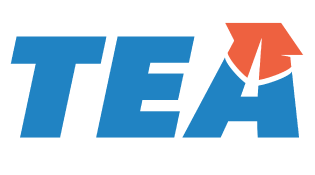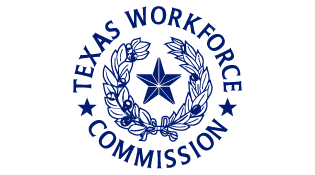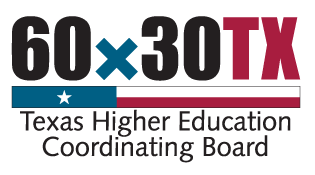When students decide to join the military, they have a few important decisions ahead of them. They must decide which branch to join, whether to enlist after high school or commission to become an officer, and choose what type of job they would like to do. For students to choose the path that is right for them, they must understand their options to determine what is best for their needs and interests.
Military readiness is an important part of Texas A–F accountability. A student is deemed military ready if they enlist in the military by December 31 following graduation. In this webinar, Mark Patton from the Military Child Education Coalition discusses options for military-bound students, and we share resources for student success.
View the webinar and slides below, or continue reading for highlights and resources from the webinar.
Thank you to our guest presenter, Mark Patton from Military Child Education Coalition, for the great information summarized on this landing page.
Texas OnCourse resources for military-bound students
There are three modules in the Texas OnCourse Academy that you will find helpful as you advise students interested in a military career. First, we encourage you to review the Military Enlistment module. This module reviews the enlistment process and outlines military branches and careers that your students may consider. You can also review the Military Academy Applications module to learn about the requirements and application process for US service academies. Both of these modules are found under the Admission and Applications Process badge.
You’ll find helpful resources in the ASVAB module. The ASVAB PowerPoint presentation in unit one will walk you through the requirements for providing the ASVAB for students in your district. Texas school districts are required to present students in grades 10–12 the opportunity to take the ASVAB or an alternative career assessment each school year. You can download and customize the PowerPoint presentation; it is a great tool to share with your colleagues or staff. You can also download a printable handout for students called Comparing ASVAB Tests, which highlights the benefits and differences of ASVAB test options. Other handouts around degree programs and admissions scores are also available in the module.
You can find the ASVAB module in the Entrance and Placement Exam badge. Or, search for ASVAB in the search bar at the top of the page.
Understanding the military
Can you name the branches of the military? Most people remember the army, navy, marine corps, air force, and coast guard, but many people forget the space force! School counselors and advisors need to understand today’s military to help military-bound students as they make key career choices in high school. Guest speaker Mark Patton describes each branch of the military in our webinar and how they might line up with a student’s skills and interests.
It’s not uncommon for a student to know that they want to join the military, but they may still be unsure about which branch to enter or what job they want to have. In this webinar, Mark breaks down military careers and provides resources that counselors can use to help students find their path. If you advise many military-bound students and don’t know the difference between the reserves and national guard, or if you would like resources to help students practice for the ASVAB, be sure to tune into the webinar.
We’ll cover some of the resources that Mark shared below.
Student options when entering the military
When students decide to enter the military, they have two options: enlist or commission for officer. Here are what counselors should know about each option:
- Enlisting: Students can enlist in the military directly after high school. A high school diploma is required. Career availability is based on need. Students must take the Armed Services Vocational Aptitude Battery (ASVAB) to determine whether they're qualified to enlist in the US military.
- Commissioning: Students who want to be officers will need to commission into the military. Commissioning requires a four-year degree, or in some cases, an advanced college degree. It is not mandatory to take the ASVAB, but students will need to pass a branch-specific officer qualifying test after college. Students can become an officer by participating in an ROTC program during college, attending an officer candidate school after college, or attending a US service academy.
Enrolling in US service academies
Students who are interested in becoming military officers may want to attend a US Service Academy. US Service Academies are competitive four-year colleges that train students to become officers. There are five US service academies: the United States Military Academy (commonly known as West Point), the United States Naval Academy, the United States Air Force Academy, the United States Coast Guard Academy, and the United States Merchant Marine Academy.
Enrollment in service academies is highly competitive. When reviewing student applications, the academies consider the following:
- High school academic performance
- Standard test scores (ACT or SAT)
- Athletics and extracurricular activities
- Leadership experience
- Community involvement
- A congressional letter of recommendation (required for all but the US Coast Guard Academy and the US Merchant Marine Academy)
Students may transfer into a military academy from another university, but credit hours are not typically accepted. They will likely begin as a freshman regardless of previous college experience.
Resources for military-bound students
ASVAB Resources:
Students who plan to enlist after high school should practice taking the ASVAB, just as they would any other entrance exam. Send them these resources to use as they study:
- Military.com practice test: A full practice test and a shorter version for students.
- ASVAB practice app: An app students can download on Android or iPhone devices. It has practice questions and explainers for the ASVAB.
- Tutor.com: A great place for students to find tutors online.
Other resources:
- Roadmap to Success: These checklists break down tasks that a student should expect to complete during each school year to prepare for a military career.
- Today’s Military: Everything that educators, students, and everyone in between needs to know about the military on an up-to-date and accessible website.
District practices for advising military and highly mobile students
Lara Gueguen, Texas OnCourse’s director of program implementation, completed the webinar by walking us through best practices from several Texas districts.
Here are some recommendations to make sure you are meeting military readiness and accommodation standards at your school:
- Connect students and families with a military liaison. Military liaisons partner with schools to assist military families. They often meet with families, provide welcome packets to students, and provide families with the tools they need to overcome education obstacles. You can find more information about military liaisons here.
- Involve student leadership. When welcoming new students, involve their peers! Getting ROTC or student council members involved is a great way to make students feel welcome. Use student tours and welcome meetings to help get students acclimated to their new school.
- Document intent to enlist. Schools are required to document intent to enlist in Public Education Information Management System (PEIMS) reporting. Make sure you are capturing this data by conducting senior exit interviews, gathering intent-to-enlist forms, and obtaining copies of student recruitment letters.
To continue learning about how to support your military-bound students, head to the Texas OnCourse Academy. You’ll find resources on ASVAB test scores, choosing a military career, and more in the Military Enlistment and ASVAB modules.






